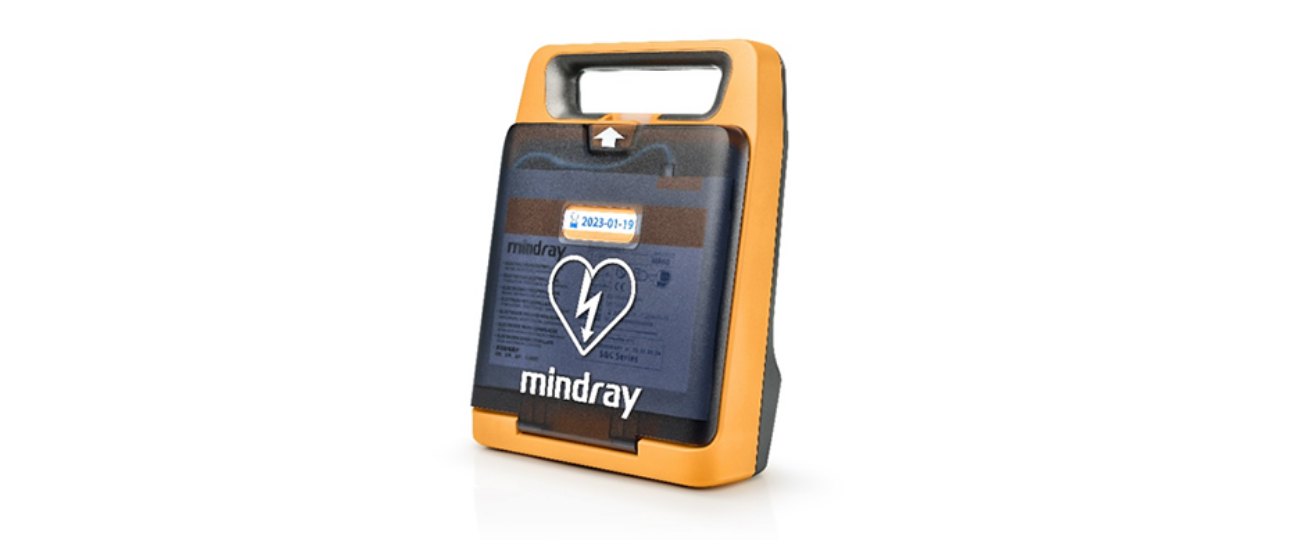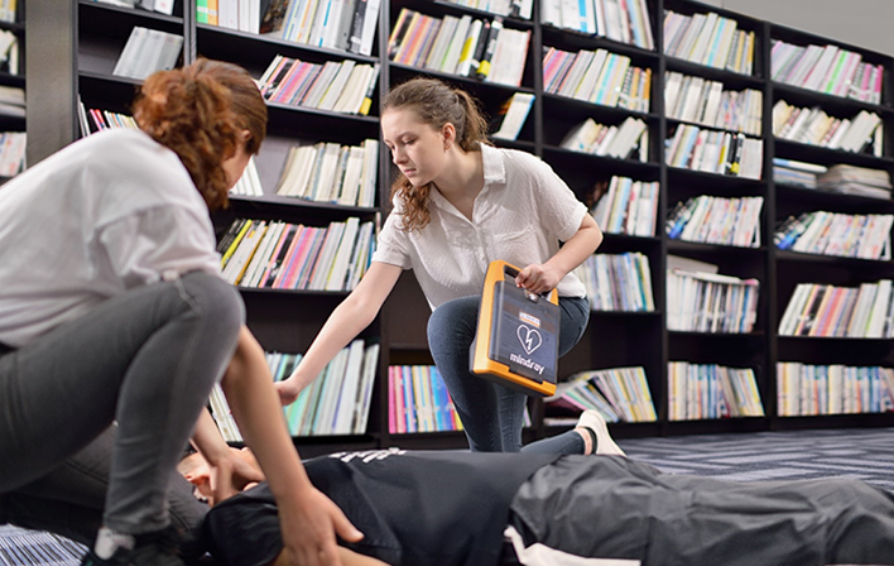Sudden cardiac arrest is a common cardiovascular event with potentially fatal consequences. A person's likelihood of survival depends on the speed of reaction of those around them, starting from falling to emergency services and hospitals. In fact, less than 1 in 10 can survive out-of-hospital cardiac arrests - predominantly because no one was able to provide the necessary first aid.
The AED (automated external defibrillator) is the key link in the Chain of Survival, but unfortunately, both are largely overlooked and misunderstood. In this post, we are going to walk you through the Chain of Survival and the role of the automated external defibrillation in it.
Automated external defibrillator overview
An AED is a portable and lightweight device that works by delivering electric shock through the chest to a person’s heart. A defibrillation device was first developed in 1930 by electrical engineer William Kouwenhoven. When he was a student at Johns Hopkins University School of Engineering, Kouwenhoven studied the link between electric shock and its impact on human heart. The shock from a defibrillator works to stop arrhythmia (irregular heart rhythm) and allows normal rhythm after sudden cardiac arrest [1].
AEDs are generally used by nonmedical personnel such as police officers, firefighters, security guards, flight attendants, and other lay rescuers who have been trained in providing CPR and know how to use AED. A study has shown that 58% of participants successfully performed defibrillation with the AED [2].
What is chain of survival?
The term “Chain of Survival” describes the sequence of events that must take place in rapid succession to increase the odds of survival from sudden cardiac arrest. This simple term was created to educate the public about its crucial role in helping people with cardiac arrest, which is treatable when the patient is taken care of in a timely manner.

A person’s chance of survival depends on every link in the Chain of Survival; they have to be executed perfectly and in the right order. The links in Chain of Survival include:
● Recognize sudden cardiac arrest – a vast majority of people do not know how to recognize symptoms of sudden cardiac arrest. But, when you fail to notice symptoms right away, the whole chain of survival is jeopardized. The first, and in most cases, the only symptom of sudden cardiac arrest is sudden collapse or loss of consciousness caused by the lack of blood in the brain. Fainting is accompanied by no heartbeat or pulse. Although sudden cardiac arrest often occurs "out of blue", some patients do experience warning signs such as fatigue, dizziness, chest pain, heart palpitations, gasping (agonal) respiration or loss of breath.
● Call ambulance as soon as the above-mentioned symptoms happen – do not wait, make sure to call emergency services immediately.
● Start CPR – after calling emergency services, make sure you start CPR immediately to increase the chances of survival. Make sure to push hard and fast in the center of the chest, about 100 to 120 pumps per minute.
● Use the AED – Bear in mind that you should always use an AED first if there is the instant access to an AED device, as it can analyze the heart rhythm and find out whether the person is experiencing a sudden cardiac arrest. CPR should be taken as quick as possible if you can’t find an AED immediately. While using an AED, it is important to follow instructions presented on the device.
● EMS care – the patient should be transferred to healthcare professionals who will provide more advanced measures
● Hospital care – emergency services will take the affected person to a hospital where further care is administered, and their condition monitored carefully [3].
Cardiac arrests are very common across the globe, and although a treatable condition, a lot more people could be saved with proper utilization of Chain of Survival, which also includes AED. The device is safe and effective, with nearly 100% accurate detection of ventricular fibrillation and also almost 100% accurate in identifying a non-shockable rhythm [4]. Scientists concluded that AED should be further studied.

However, it is also important to educate more people about the importance of AED and explain how it is used properly. After all, prompt and fast reaction is the best way to ensure a patient with sudden cardiac arrest survives and recovers from this cardiovascular event.
When it comes to the use of the AED in the Chain of Survival, we understand that a lot depends on the quality of the device and accessories that come with it. That is why Mindray ensures our AEDs are very fast to deliver the shock and incredibly easy to use, even for a first-timer.
Conclusion
AEDs are user-friendly and easy to carry wherever necessary. They have a major role in the Chain of Survival, but it is important to remember that every link in this chain has to be executed perfectly to boost a patient's likelihood of surviving sudden cardiac arrest. Learn Chain of Survival and how to recognize symptoms of sudden cardiac arrest, and one day you could be in the opportunity to save someone's life.
References
[1] What Is an Automated External Defibrillator? (2017). American Heart Association. Available at : https://www.heart.org/-/media/data-import/downloadables/3/1/c/pe-abh-what-is-an-automated-external-defibrillator-ucm_300340.pdf (Accessed: 27 February 2020)
[2] Automated external defibrillator use among the general population.(2003). University of Pittsburgh School of Dental Medicine, PA 15261, USA. Available at : https://www.ncbi.nlm.nih.gov/pubmed/14733268 (Accessed: 27 February 2020)
[3] The Chain of Survival. | sca-aware.org. Available at : https://www.sca-aware.org/about-sudden-cardiac-arrest/the-chain-of-survival (Accessed: 27 February 2020)
[4] Automatic External Defibrillator: Key Link in the Chain of Survival.(2002). Journal of Cardiovascular Electrophysiology 13(1 Suppl):S92-5. Available at : https://www.researchgate.net/publication/11518590_Automatic_External_Defibrillator_Key_Link_in_the_Chain_of_Survival (Accessed: 27 February 2020)
